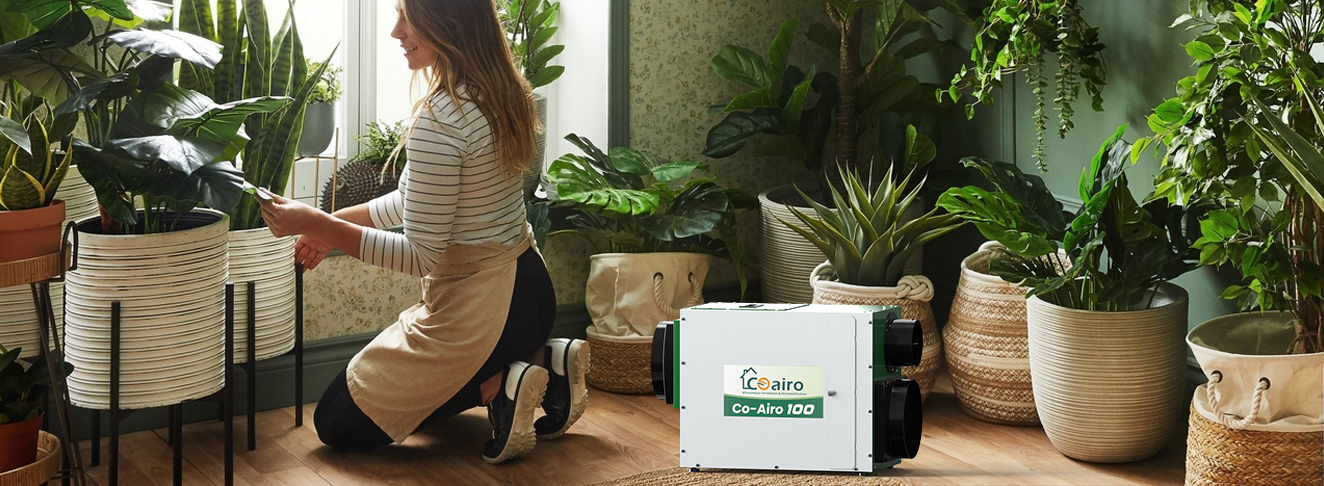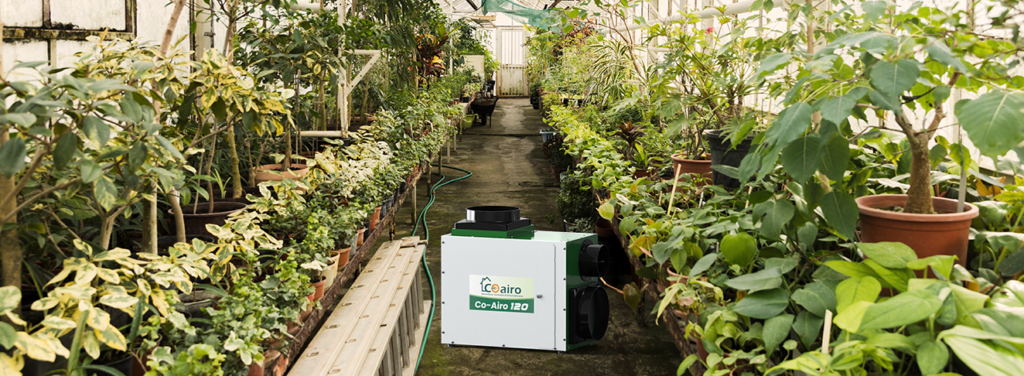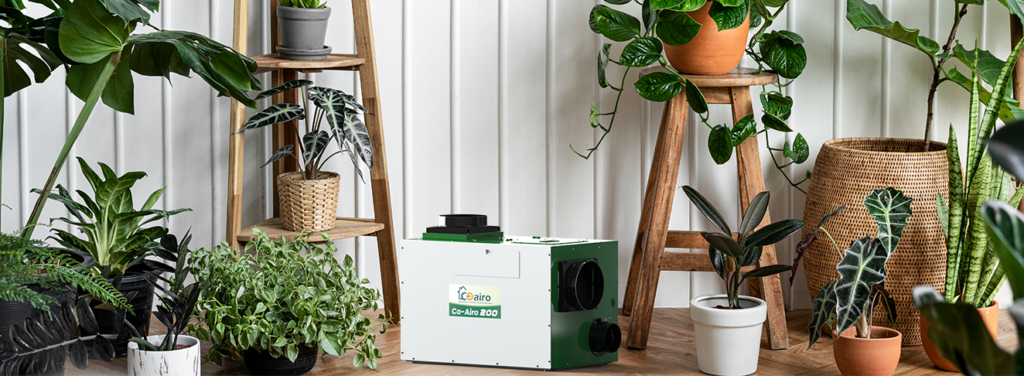If you are a plant lover, there is now nothing quite as distressing as spotting mold on your beloved greenery. Mold on flora no longer seems unsightly however can also be a sign of an awful growing surrounding. Fortunately, you may take steps to both treat and prevent mold growth on plants, ensuring your indoor lawn flourishes.
In this guide, we’ll stroll you through the realistic techniques you could dispose of mold from plants and avoid future outbreaks. We’ll speak of a way to optimize your plant care normally with particular techniques to manage moisture tiers, drainage, air stream, and humidity.
Let’s get started!
1) Avoid Overwatering: Understanding Its Effects on Mold Growth
One of the most common causes of mildew increase in vegetation is overwatering. When you overwater your plants, the soil turns waterlogged. This creates the right breeding floor for mold and fungus. Excessive moisture also limits the roots’ potential to soak up oxygen. This weakens the plant’s situation. If you locate mold on the leaves or inside the soil, overwatering is probably the purpose.
So, how do you keep the plant? Start with the aid of adjusting your watering habits. Make sure the soil can dry out between waterings. The rule of thumb is to water till the top inch of soil is dry. This helps maintain balanced moisture ranges. It also stops mold growth at the same time as presenting enough hydration for the plant.
In addition to adjusting your watering, check that your pots have proper drainage holes. Standing water at the bottom of a pot can result in mold problems. Standing water is a great environment for mold. If you are unsure, invest in pots with higher drainage. You can also use a layer of rocks at the lowest to enhance water drift.
By stopping waterlogging, you’ll not simplest keep your plant life happy but also reduce the probability of mold and mold. It’s an easy but powerful step in the fight against mildew on vegetation.
2) Optimize Drainage: Benefits for Mold Prevention
Optimizing drainage is one of the maximum essential steps in mold prevention. Stagnant water in pots creates the right conditions for mold increase. Without proper drainage, water collects at the lowest of your pots. This extra moisture encourages mold to take maintenance.
Ensure your pots have enough drainage holes. This allows excess water to escape, retaining the soil moist but now not waterlogged. If your pots don’t have drainage holes, bear in mind adding them yourself. Alternatively, switch your plant life to new pots with better drainage.
Another beneficial tip is to apply properly draining soil. Standard potting soil can retain an excessive amount of moisture. Look for mixes designed for true drainage. A proper soil mixture allows water to skip via extra without difficulty. This reduces the probability of mold growth. You may even create your personal custom blend by adding perlite or sand. These materials increase airflow and drainage in the soil.
If you stay in an especially humid environment, or if mold persists despite these precautions, you can try investing in a Whole House Dehumidifier. This device reduces moisture in the air at some point on your property. It can further enhance drainage situations on your plants. By controlling the water in the soil and the humidity in the air, you offer your vegetation an excellent chance for mold-free growth.
3) Maintain Air Circulation: The Role of Fresh Air in Mold Prevention
Good air movement is crucial for preventing mold buildup. When air circulates freely around your flora, it enables hold humidity levels in a look. It additionally allows moisture to evaporate extra quickly. Stagnant air, however, traps moisture. This creates the best surroundings for mold and mold to grow in your plant life.
To enhance airflow, ensure your vegetation is not overcrowded. Leave enough space between them so air can pass freely around each one. If you are developing plants in a small region, like a greenhouse or indoor garden, don’t forget the use a fan. A simple oscillating fan can make a massive difference. It facilitates their transfer and decreases the possibility of mold development.
If you are growing flora in a room with negative airflow, you may want to put in an exhaust fan. Alternatively, open a window occasionally to permit clean air in. It reduces extra moisture within the air, making it simpler for the air around your vegetation to live clean and dry.
Remember, the aim is to create a healthy, balanced environment. In this way, your plants can thrive without being exposed to the excess moisture that encourages mold growth.
4) Promote Humidity Balance: Why a Whole House Dehumidifier Matters
Humidity is a key issue in mold boom on plants. Plants naturally release moisture into the air through a method called transpiration. This can improve the humidity stages around them. If the humidity in your home is too high, mildew is more likely to shape your flora. This is in particular proper in areas with bad air movement.
Maintaining proper humidity is crucial for plant health and mold prevention. The perfect humidity degree for maximum plants is between 40-60%. When humidity is just too high, mold and mildew thrive. When it’s too low, vegetation can be afflicted by dehydration and stress.
One of the best ways to control humidity in your property is via using a Whole House Dehumidifier. This device lowers the humidity ranges at some stage in your complete domestic, such as rooms with flora. By the use of a Whole House Dehumidifier, you save your flora from being uncovered to excessive moisture in the air. This reduces the hazard of mildew troubles.
In addition to using a dehumidifier, it’s a great concept to monitor the humidity levels with a hygrometer. A hygrometer facilitates you tracking the moisture tiers in your private home. This ensures they stay inside the most useful range for each plant’s life and overall comfort.
5) How to Treat Mold Once It’s on Your Plants
If you observe mold in your plant life, don’t panic! There are several methods to get rid of it. The first step is to isolate the affected plant. This will help save the mold from spreading to others.
Next, carefully dispose of any seen mold with a smooth brush or fabric. For an extra thorough cleansing, wipe down the leaves with a mixture of water and mild dish soap or diluted vinegar.
If the mold has unfolded considerably, you can need to trim lower back the affected parts of the plant. Be positive about sterilizing your scissors or pruning shears before and after use. This will assist prevent the spreading of any capacity spores.
For cussed mold problems, don’t forget the use a fungicide designed for indoor flora. Look for herbal options, like neem oil or a baking soda answer. These are powerful and secure for most houseplants.
Conclusion
Mold on vegetation is more than just a classy difficulty. It can affect their normal fitness and well-being. To save your mold from taking a keep, avoid overwatering, optimize drainage, improve airflow, and preserve balanced humidity degrees.
Using a Whole House Dehumidifier is a powerful way to manipulate humidity in your home. It helps create a healthier environment for each of you and your plant life.
By following these simple steps, you can keep your plant life free from mildew. Enjoy a flourishing, inexperienced space without the risk of mold.
Don’t allow mold to take over your plants. Take action now and create the correct surroundings for plant growth!


